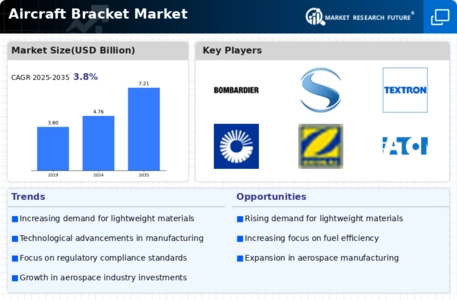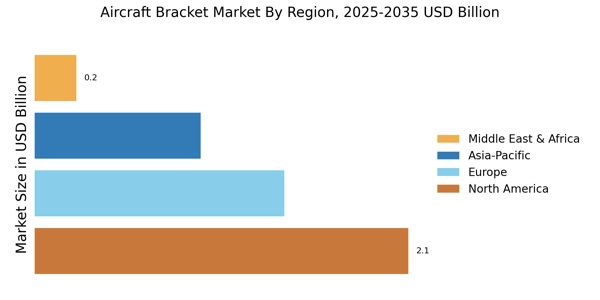Rising Aircraft Production Rates
The Aircraft Bracket Market is poised for growth due to rising aircraft production rates, driven by increasing air travel demand. According to industry forecasts, the commercial aviation sector is expected to see a compound annual growth rate of approximately 4% over the next decade. This surge in production necessitates a corresponding increase in the demand for aircraft components, including brackets. As manufacturers ramp up production to meet this demand, the Aircraft Bracket Market is likely to benefit from economies of scale, leading to reduced costs and enhanced product availability. This trend underscores the interconnectedness of aircraft production and the demand for high-quality brackets.
Emerging Markets and Global Expansion
The Aircraft Bracket Market is witnessing growth opportunities in emerging markets, where increasing investments in aviation infrastructure are paving the way for expansion. Countries in Asia and the Middle East are experiencing rapid growth in their aviation sectors, driven by rising disposable incomes and a burgeoning middle class. This trend is expected to lead to an increase in aircraft orders, thereby boosting the demand for aircraft components, including brackets. As manufacturers seek to establish a presence in these markets, the Aircraft Bracket Market may see a diversification of its customer base and an increase in competitive dynamics, ultimately fostering innovation and growth.
Regulatory Compliance and Safety Standards
The Aircraft Bracket Market is significantly influenced by stringent regulatory compliance and safety standards imposed by aviation authorities. These regulations necessitate the use of high-quality materials and robust designs to ensure the safety and reliability of aircraft components. As a result, manufacturers are compelled to invest in research and development to meet these standards, which can lead to increased operational costs. However, this also presents an opportunity for innovation, as companies that successfully navigate these regulations can gain a competitive edge. The ongoing evolution of safety standards is likely to drive demand for advanced brackets that comply with the latest requirements, thereby fostering growth in the Aircraft Bracket Market.
Increasing Demand for Lightweight Materials
The Aircraft Bracket Market is experiencing a notable shift towards the adoption of lightweight materials, driven by the need for enhanced fuel efficiency and performance. Manufacturers are increasingly utilizing advanced composites and alloys that reduce overall aircraft weight. This trend is underscored by the fact that a reduction of just 1% in aircraft weight can lead to a 0.75% increase in fuel efficiency. As airlines and manufacturers prioritize sustainability and cost-effectiveness, the demand for lightweight brackets is expected to rise significantly. This shift not only contributes to operational savings but also aligns with regulatory pressures for reduced emissions, thereby propelling growth within the Aircraft Bracket Market.
Technological Innovations in Manufacturing Processes
Technological advancements in manufacturing processes are reshaping the Aircraft Bracket Market. Innovations such as additive manufacturing and precision machining are enabling the production of more complex and efficient bracket designs. These technologies allow for reduced lead times and lower production costs, which are critical in a competitive market. For instance, the implementation of 3D printing in bracket production can decrease material waste by up to 90%, thus enhancing sustainability. As manufacturers adopt these cutting-edge technologies, the Aircraft Bracket Market is likely to witness increased efficiency and a broader range of product offerings, catering to diverse customer needs.


















Leave a Comment